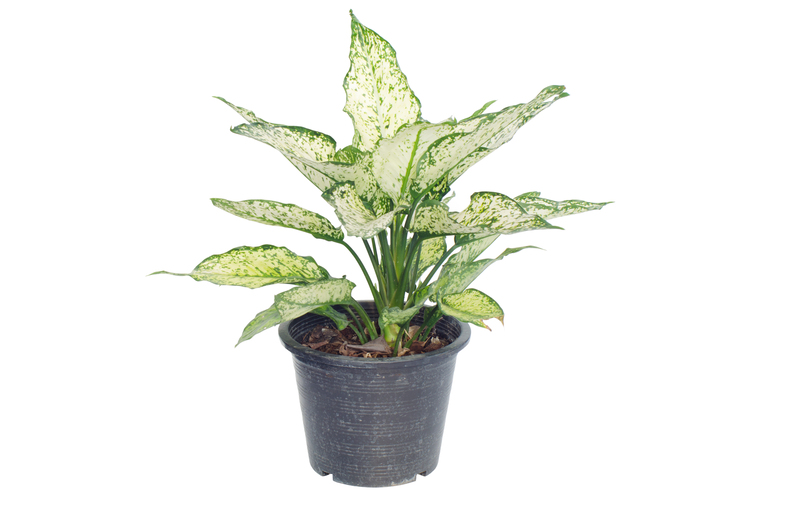Building Resilient Gardens Against Wind Challenges
Posted on 20/06/2025
Building Resilient Gardens Against Wind Challenges
Gardening is a rewarding pursuit, yet few factors challenge garden enthusiasts as persistently as wind. Whether you face regular breezes or violent gusts, understanding how to create wind resistant gardens can mean the difference between thriving plants and withered disappointment. This comprehensive guide will empower you to start building resilient gardens against wind challenges, safeguarding your outdoor sanctuary for seasons to come.
Understanding Wind's Impact on the Garden
Wind is more than just moving air. In the garden, it can be both friend and foe. Breezes help with pollination and disease reduction by drying foliage, but excessive or persistent winds can cause:
- Physical damage: Broken stems, snapped branches, and uprooted plants
- Increased transpiration: Plants lose moisture faster and require more frequent watering
- Soil erosion: Vital topsoil--and nutrients--can blow away
- Chilling: Cold winds can lower plant temperatures and cause frost damage
- Poor pollination: High winds may disrupt bee activity and pollen transfer
If you're determined to build resilient gardens that withstand wind, the first step is to understand both your local climate and the microclimates within your yard.
Assessing Your Garden's Exposure
No two gardens are the same. Before planting, ask:
- Where does wind typically come from? (In many regions, prevailing winds can be mapped.)
- Are there existing obstacles? Fences, buildings, and trees can block or funnel wind.
- Which areas are most exposed? South or west-facing slopes often feel it more.

Design Principles for Wind Resistant Gardens
The most robust windproof gardens employ thoughtful design paired with careful plant selection. Consider these strategies to maximize garden resilience in windy places:
Create Effective Windbreaks
Windbreaks are objects or plantings that reduce wind velocity. The most effective windbreaks are semi-permeable--they slow, rather than deflect, the wind. Solid walls can create powerful turbulence on the downwind side.
- Hedges: Plant conifers, boxwood, or native shrubs in a staggered row. Mixed-species windbreaks add biodiversity.
- Fences: Select louvered or slatted fences that allow some air passage (around 50% solid, 50% open is ideal).
- Living walls: Utilize vines on trellis/netting for a green, living windblock.
- Treed buffers: Taller trees on the windward side, with descending heights toward the interior, offer tiered protection.
Strategic Garden Layout
The location of plants and structures matters. Wind-tolerant plants should form the outer protective layers, with more vulnerable species nestled in the garden's heart.
- Site sensitive plants: Place delicate species in sheltered corners or behind barriers.
- Group plantings: Mass plants together--they shield each other and reduce wind whip.
- Staggered rows: A zigzag configuration slows wind more than straight lines.
- Mulch planted beds: Mulch helps soil retain moisture and reduces erosion effects.
Best Plant Choices for Wind Resilience
A core aspect of building gardens resilient to wind is plant selection. Look for species known for their wind resistance; these typically have:
- Flexible stems and branches that bend rather than snap
- Small, tough leaves that reduce water loss and resist tearing
- Deep or fibrous roots to anchor plants securely
Top Wind Hardy Trees and Shrubs
- Tamarisk (Tamarix spp.)
- Hawthorn (Crataegus spp.)
- Siberian Elm (Ulmus pumila)
- Scots Pine (Pinus sylvestris)
- Sea Buckthorn (Hippophae rhamnoides)
- Escallonia and Griselinia (excellent for coastal windbreaks)
Wind Tolerant Perennials and Grasses
- Lavender
- Russian Sage (Perovskia atriplicifolia)
- Daylily (Hemerocallis)
- Miscanthus and Panicum grass
- Yarrow (Achillea millefolium)
Annuals and Edibles Thriving in Windy Gardens
- Sunflowers (short, multi-branched varieties)
- Chard and Kale
- Wind-resistant beans (such as bush types over climbing beans)
- Carrots and Beets (root crops are naturally more wind-proof)
Practical Wind Protection Measures
Staking and Support Techniques
In especially exposed areas, even the toughest plants merit support--at least when young.
- Sturdy stakes: Use flexible ties, not too tightly, allowing some movement to encourage strong stems.
- Tripods and cages: Provide all-round support for climbers and sprawling vegetables.
- Windbreak fabric: Temporary netting can be used for protection in the first years.
Smart Soil Management
Healthy soil is core to garden resilience against wind, anchoring roots and retaining moisture.
- Add organic matter: Compost improves soil structure and weight, reducing erosion.
- Mulch deeply: Suppress weeds and lock in moisture with organic mulch or gravel.
- Cultivate cover crops: During off-season, "green manure" plants protect bare soil from wind erosion.
Watering and Plant Care Tips
Wind dries plants and soil quickly--adjust your care for lasting garden resilience.
- Water deeply but less often: Encourage deep rooting able to withstand wind stress.
- Monitor container plants: Pots dry out refreshingly fast in the wind.
- Plant health: Keep plants well-fed and pest-free; stressed plants are more prone to wind damage.
Innovative Design Ideas for Windproof Gardens
Earthworks and Landforms
For long-term solutions, use land itself as your ally against wind:
- Berms: Raised mounds of soil planted with tough ground covers can direct or deflect winds.
- Sunken beds: Plant in shallow, sheltered basins to lower plant exposure.
- Stone walls: Low, permeable rock walls offer lasting wind reduction and habitat for beneficial insects.
Layered Planting Schemes
Envision your garden like a forest edge: tall trees, then shrubs, then perennials and groundcovers. Layers interrupt wind at multiple levels, enhancing resiliency to harsh winds.
- Edge planting: Place tallest species outermost, then grade gently downward in tiers.
- Multi-season structure: Mix evergreens, deciduous, and herbaceous plants for year-round protection.
Wind-friendly Garden Accessories
- Decorative screens double as artwork and disruption to breezes.
- Artful boulders at corners slow wind and add natural beauty.
- Permeable garden sheds and arbors create sheltered microenvironments for highlight plants.
Coastal Garden Resilience--A Special Case
Coastal and seaside gardens face relentless wind and salt spray. Here's how to build garden resilience on the coast:
- Salt-tolerant plants (sea thrift, cordgrass, some pittosporums)
- Robust, clipped hedges of escallonia, griselinia, or olearia for blockading salt-laden winds
- Extra-deep mulching and adding gypsum to soils to counteract salt
- Regular hosing off foliage after storms to remove salt residues
Garden Maintenance for Continual Resilience
Resiliency isn't a one-time fix. It's a year-round, ongoing commitment. Maintain wind-resilient landscapes by:
- Pruning judiciously--remove dead wood, encourage strong branching, and open up canopies to allow wind passage (rather than letting it push against dense sails of foliage)
- Annual windbreak assessment--replace or trim broken boughs, fill gaps in hedges, and monitor fence stability
- Replenishing mulch ahead of each windy season
- Vigilance after storms: Check for wind damage promptly and undertake repairs before problems escalate
Benefits of Building Wind-Resilient Gardens
- Increased plant survival and vigor even in severe weather
- Higher fruit and vegetable yields
- Reduced water usage and less frequent irrigation
- Enhanced biodiversity--windbreaks provide habitats for wildlife
- Protected soil structure and nutrients
- Greater comfort and usability for people and pets using the garden

Frequently Asked Questions About Wind Resilient Gardening
How tall should my windbreak be?
A windbreak protects a downwind distance up to 10 times its height, so a 2-meter hedge benefits an area up to 20 meters away. For home gardens, hedges 1.5-2.5 meters tall are typical.
What are some fast-growing wind resistant plants?
Look for willow (Salix), Italian alder (Alnus cordata), or privet (Ligustrum) for rapid windbreak establishment.
Can I still have a beautiful flower garden in windy areas?
Absolutely! Smart design using resilient flowers--like rudbeckia, coreopsis, and echinacea--combined with good wind protection measures, lets you enjoy splashes of color even in exposed gardens.
What's best for small, urban spaces?
Latticed screens, vertical planting walls, and container gardens with short, bushy plants are ideal for balconies, rooftops, and yards with limited space for large windbreaks.
Conclusion: Embrace the Breeze, Build Resilience
Building resilient gardens against wind challenges isn't just about battling the elements--it's about designing outdoor spaces to harmonize with nature's rhythms. By blending strategic design, thoughtful plant selection, and proactive care, you'll transform your garden from wind-battered to wind-tough, opening new possibilities for beauty, productivity, and enjoyment.
Start today by assessing your site, planning windbreaks, and choosing sturdy plants. A little effort now will help your garden flourish--no matter how the wind blows.

